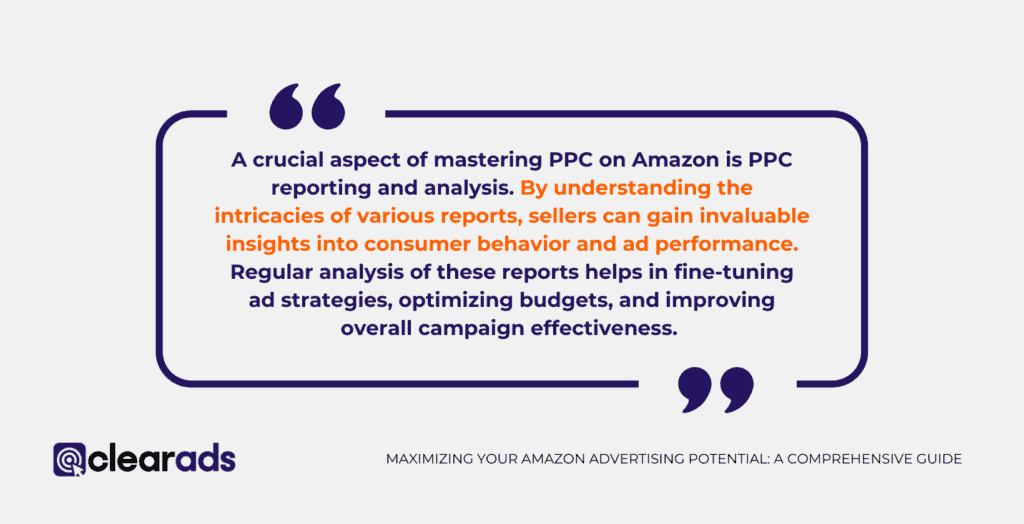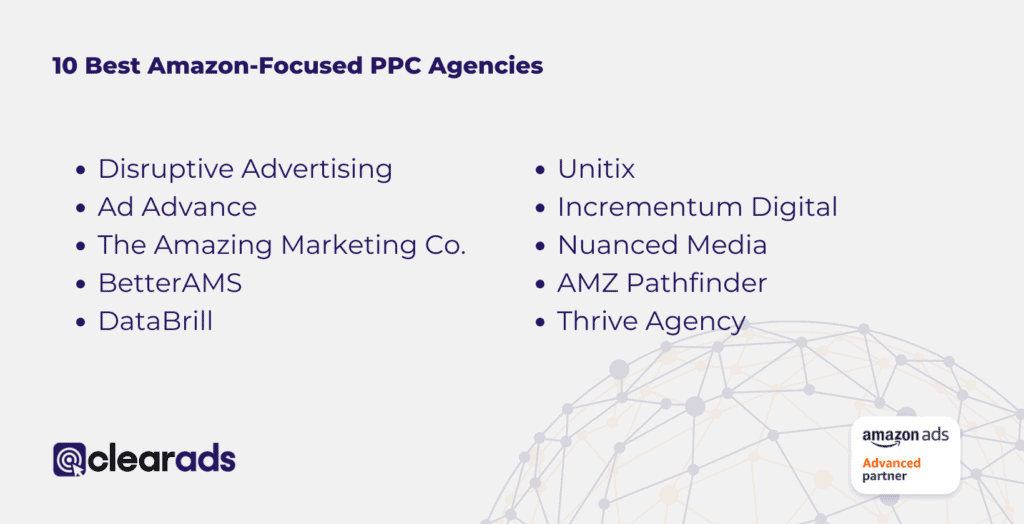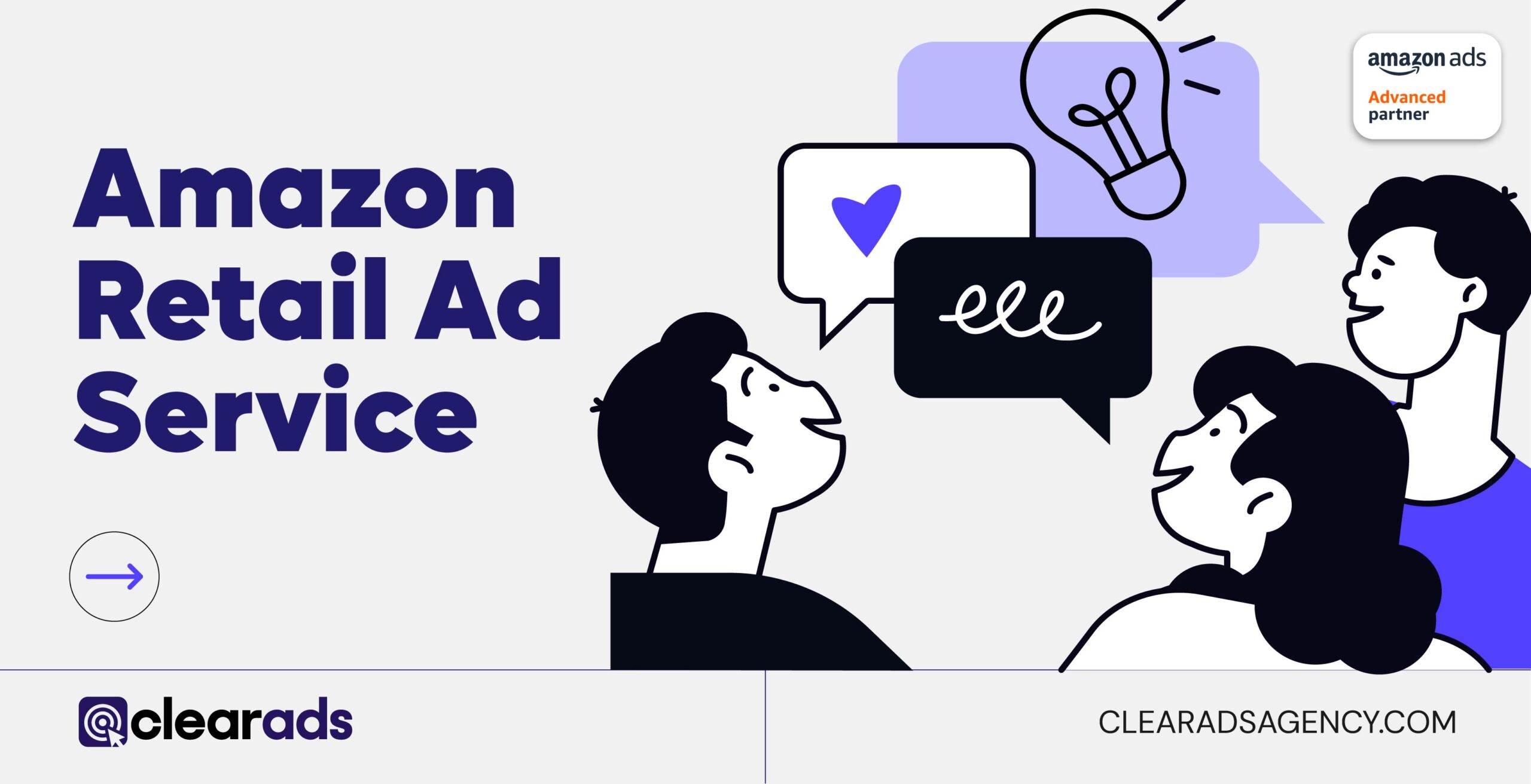Amazon PPC (Pay-Per-Click) advertising is a crucial tool for sellers and brands looking to drive sales and enhance their visibility on the Amazon platform. This form of advertising allows sellers to bid on keywords, ensuring that their products appear in prominent positions in Amazon’s search results, thereby increasing the likelihood of clicks and purchases.
This article aims to provide a comprehensive overview of Amazon PPC, delving into various strategies and advanced techniques that can be employed to optimize advertising campaigns. Whether you’re new to Amazon PPC or looking to refine your approach, this guide will offer valuable insights into how to effectively use this powerful marketing tool.
Additionally, for readers interested in exploring specific topics in more detail, this article will link to specialized articles. These links will offer deeper dives into particular aspects of Amazon PPC, from keyword research and bidding strategies to understanding Amazon’s A9 algorithm and leveraging analytics for campaign improvement. By providing these resources, the article ensures that readers have access to a wealth of information, catering to both beginners and experienced marketers.
Understanding Amazon PPC
Amazon PPC, or Pay-Per-Click, is a pivotal advertising model in the world of e-commerce, especially within the Amazon marketplace. It operates on a simple yet effective principle: advertisers pay a fee each time their ad is clicked. This model allows sellers and brands to place ads for their products directly in Amazon’s search results and on other product pages. The visibility gained through Amazon PPC is significant because it directly targets consumers who are already in the mindset to purchase, making it a highly effective tool for driving sales and increasing product visibility.
The importance of Amazon PPC in e-commerce cannot be overstated. As the largest online retail platform, Amazon’s vast customer base presents a lucrative opportunity for sellers to reach a wide and diverse audience. PPC campaigns on Amazon can be tailored to target specific demographics, search terms, and consumer behaviors, making them highly customizable and efficient in reaching the intended audience.
For readers interested in diving deeper into this topic. this article covers the basics of how Amazon PPC works, its various formats, and the initial steps to set up a campaign. It’s an excellent resource for those new to Amazon PPC or those seeking to understand the foundational aspects of this powerful advertising tool in the e-commerce landscape.
Amazon Ad Types: A Deep Dive into Best Practices
Amazon’s advertising platform has evolved significantly, expanding its capabilities far beyond just driving sales. Initially focused on helping sellers increase their product visibility and boost sales, the platform has grown to cater to a diverse range of seller needs. This evolution reflects Amazon’s recognition of the varied objectives and strategies of different sellers and brands on its platform.
One key aspect of this evolution is the development of branding tools. Amazon now offers options like Sponsored Brands and Stores, which enable sellers to build brand awareness and loyalty, not just drive immediate sales. These tools help businesses create a more holistic and engaging presence on Amazon, allowing them to tell their brand story and connect with customers on a deeper level.
Additionally, Amazon has introduced advanced targeting and analytics features. These features enable sellers to understand their audience better, tailor their advertising strategies more precisely, and measure the impact of their advertising efforts beyond just sales figures. This analytical approach helps sellers optimize their campaigns for a variety of goals, including customer acquisition, retention, and even market research.
Amazon Pay-Per-Click (PPC) advertising has become a critical tool for sellers to increase visibility and sales on the platform. By leveraging Amazon’s detailed consumer data, sellers can create targeted ads that reach potential buyers at the right time. PPC campaigns offer flexibility and control over ad spend, with sellers only paying when a shopper clicks on their ad. This performance-based model ensures that ad budgets are utilized effectively. Sellers can choose from a variety of ad formats, including Sponsored Products, Brands, and Displays, each catering to different goals like brand awareness or direct sales. With Amazon’s vast user base, PPC ads can significantly boost product visibility, drive traffic to listings, and ultimately increase sales. Sellers need to understand the nuances of Amazon PPC to optimize their campaigns for maximum return on investment.
Crafting Effective PPC Strategies
Developing a well-rounded Amazon PPC (Pay-Per-Click) strategy is vital for sellers looking to maximize their success on this expansive e-commerce platform. A comprehensive approach to Amazon PPC not only drives sales but also enhances brand visibility, efficiently targets the right audience, and optimizes advertising spend. Given the competitive nature of the Amazon marketplace, a nuanced and strategic approach to PPC is essential for standing out and achieving sustainable growth.
A robust Amazon PPC strategy typically involves 6 key components:
- Keyword Research and Optimization: Identifying the right keywords is crucial for ensuring your ads reach your target audience. This involves researching search terms that potential customers are using and continually refining these choices based on performance data.
- Ad Campaign Structure: Structuring campaigns effectively, by product category, target audience, or other criteria, helps in managing them more efficiently and allows for more precise targeting and budget allocation.
- Bidding Strategies: Deciding on the right bidding strategy, whether it’s manual or automatic, and adjusting bids based on the competitiveness of keywords and desired ad placements.
- Performance Analysis and Optimization: Continuously monitoring campaign performance, analyzing metrics like click-through rate (CTR), conversion rate, and return on ad spend (ROAS), and making necessary adjustments to improve efficiency and effectiveness.
- Leveraging Different Ad Types: Utilizing the variety of ad formats available on Amazon, including Sponsored Products, Sponsored Brands, and Sponsored Display Ads, to target customers at different stages of the buying process.
- Understanding Amazon’s A9 Algorithm: Keeping abreast of how Amazon’s search algorithm works can help in optimizing listings and ads for better visibility and ranking.
The article Strategic Approaches in Amazon PPC delves deeper into these strategic approaches, offering detailed guidance and advanced tactics. For readers eager to enhance their understanding and application of Amazon PPC strategies, this article serves as an invaluable resource, providing in-depth insights into each aspect of creating and managing a successful Amazon PPC campaign. Whether you are new to Amazon PPC or an experienced seller, this article is designed to elevate your advertising approach on Amazon.
Optimizing Amazon PPC Campaigns
Given the dynamic nature of the Amazon marketplace, where consumer preferences and competition can change rapidly, continuously refining and adjusting PPC campaigns is essential. This process of ongoing optimization ensures that campaigns remain effective, cost-efficient, and aligned with evolving business goals and market trends.
Key optimization techniques for Amazon PPC campaigns include:
- Regular Keyword Adjustments: Continuously researching and updating the keywords used in campaigns is crucial. This involves adding new, relevant keywords, pausing underperforming ones, and adjusting bids based on keyword performance.
- A/B Testing of Ad Copy and Images: Experiment with different ad copy, images, and other creative elements to see what resonates best with the target audience. This testing helps in identifying the most effective ways to attract and engage potential customers.
- Bid Optimization: Regularly reviewing and adjusting bids to ensure competitiveness while also maintaining a positive return on investment (ROI). This might include increasing bids on high-performing keywords and reducing them to less effective ones.
- Analyzing and Acting on Performance Data: Keeping a close eye on key performance indicators (KPIs) like click-through rate (CTR), conversion rate, and advertising cost of sales (ACoS). Using this data to make informed decisions about campaign adjustments.
- Leveraging Negative Keywords: Identifying and setting negative keywords to prevent ads from showing up in irrelevant searches, which helps in reducing wasted ad spend and improving campaign relevance.
- Seasonal Adjustments: Modifying campaigns for seasonal trends, holidays, and special events to capitalize on changes in consumer behavior and demand.
- Utilizing Amazon’s Automated Tools: Using Amazon’s own tools and algorithms for optimization, like dynamic bidding strategies and placement adjustments, to enhance campaign performance.
The article Optimization Techniques in Amazon PPC offers a deeper exploration into these and other optimization techniques. It provides detailed insights and step-by-step guidance for sellers and marketers looking to refine their Amazon PPC strategies continuously. This resource is particularly valuable for those who want to maintain the relevancy and efficiency of their campaigns in the fast-paced Amazon marketplace. By delving into this article, readers can gain a more thorough understanding of how to effectively optimize their Amazon PPC campaigns for maximum impact and return on investment.
Amazon PPC Reporting: Tools, Techniques, and Insights

A crucial aspect of mastering PPC on Amazon is PPC reporting and analysis. By understanding the intricacies of various reports, sellers can gain invaluable insights into consumer behavior and ad performance. Regular analysis of these reports helps in fine-tuning ad strategies, optimizing budgets, and improving overall campaign effectiveness.
Advanced tools and techniques can be utilized for deeper insights, enabling sellers to make data-driven decisions. Customized reports tailored to specific campaign goals are crucial for monitoring progress and identifying areas for improvement. In essence, adept handling of PPC reporting and analysis is key to maximizing ROI and ensuring long-term success in Amazon’s dynamic marketplace.
How to Measure Campaign Success with Metrics

Measuring the success of a campaign with metrics involves analyzing key performance indicators (KPIs) that reflect the campaign’s objectives. Common metrics include conversion rates, click-through rates (CTR), cost per acquisition (CPA), return on ad spend (ROAS), and overall engagement rates. Conversion rates reveal how effectively ads lead to desired actions, while CTR measures the ratio of clicks to impressions, indicating ad relevance. CPA assesses cost-effectiveness in acquiring new customers, and ROAS evaluates financial returns from advertising expenses. Engagement rates provide insights into how interactively the audience is responding. Analyzing these metrics provides a clear understanding of campaign performance, guiding future strategies and optimizations.
Interpreting Amazon PPC (Pay-Per-Click) metrics is fundamental to evaluating and enhancing campaign performance. Understanding these metrics allows sellers to make data-driven decisions, optimize their advertising spend, and ultimately achieve their sales and marketing objectives more effectively.
5 more metrics to focus on:
- ACOS (Advertising Cost of Sales): This metric represents the ratio of ad spend to targeted sales and is crucial for understanding the direct profitability of PPC campaigns. A lower ACOS indicates more efficient advertising, while a higher ACOS might suggest a need for optimization.
- TACOS (Total Advertising Cost of Sales): This broader metric takes into account the total revenue (including organic sales) concerning advertising spend. It provides a more holistic view of how advertising impacts overall sales performance.
- Impressions: This measures how often your ads are displayed. High impressions indicate good visibility, but when coupled with low clicks or conversions, it might signal a need to adjust targeting or ad content.
- Clicks and Click-Through Rate (CTR): These metrics measure how often your ads are clicked. They are indicators of ad relevance and appeal to your target audience. A high CTR is generally desirable, as it suggests that the ad is relevant and engaging to potential customers.
- Understanding and analyzing these metrics is essential for assessing the effectiveness of Amazon PPC campaigns. They provide insights into what is working well and what areas need improvement. For instance, a high ACOS might indicate that keywords or ad groups are not effectively targeted, or ad spend is too high relative to the sales generated.
Leveraging Tools for Success
Using tools and software for Amazon PPC campaign management provides advanced analytics, automates tedious tasks, and offers insights that can significantly improve campaign performance. They enable precise targeting, efficient budget management, and real-time adjustments based on performance data. Innovative tools available range from keyword research and bid management software to comprehensive analytics platforms.
Advanced Concepts and Strategies
Advanced concepts like ACoS (Advertising Cost of Sales) and TACoS (Total Advertising Cost of Sales) are crucial in evaluating Amazon PPC campaigns. ACoS measures the efficiency of your advertising spend relative to the revenue generated, while TACoS provides insight into the overall impact of advertising on total sales. Leveraging seasonality in campaigns can significantly boost efficiency and profitability by targeting customers when they are most likely to purchase. For a deeper understanding of these advanced concepts and their strategic applications in Amazon PPC, delve into Advanced Concepts in Amazon PPC where you’ll find comprehensive insights and practical applications.
Overcoming Challenges
Common challenges in Amazon PPC advertising include managing complex bidding strategies, selecting effective keywords, and optimizing ad spend. Advertisers often struggle with balancing budget constraints against campaign goals. Practical solutions include using data-driven strategies for keyword optimization, employing automated bidding tools for efficiency, and continuously monitoring and adjusting campaigns based on performance metrics. For more detailed solutions and strategies to navigate these challenges, explore Challenges and Solutions in Amazon PPC where you’ll find comprehensive guidance on overcoming common hurdles in Amazon PPC advertising.
Synergy Between PPC and Organic Rankings
Amazon PPC campaigns can significantly impact a product’s organic rankings on Amazon. Successful PPC campaigns increase product visibility and sales velocity, which are key factors Amazon’s algorithm considers for organic ranking. This synergy between PPC and organic performance underlines the need for a holistic approach in Amazon marketing, where both paid and organic strategies are aligned for maximum effect. To learn more about how Amazon PPC campaigns can enhance organic rankings and the importance of an integrated marketing strategy, delve into the insights offered in “[Article 9: Amazon PPC and Organic Rankings].”
How is AI Revolutionizing Amazon Advertising?

Artificial Intelligence (AI) is revolutionizing Amazon PPC by enhancing keyword optimization and predictive analytics. AI algorithms can analyze vast data sets to predict market trends, optimize bids, and refine keyword strategies.This results in more efficient and effective PPC campaigns. For a comprehensive understanding of AI’s transformative role in Amazon PPC and its potential to reshape advertising strategies, delve into the detailed exploration provided in Revolutionizing PPC with AI.
A/B Testing for Success
A/B testing allows for precise optimization through experimentation. By systematically comparing different variables like ad copies, keywords, or landing pages, advertisers can glean valuable insights into what resonates best with their audience. This methodical approach enables the fine-tuning of campaigns based on solid data rather than assumptions, leading to increased efficiency, higher conversion rates, and ultimately, improved campaign ROI. For a comprehensive understanding and application of A/B testing in your Amazon PPC strategies, delve into the detailed methodologies and best practices.
Harnessing Sponsored Brand Ads
Sponsored Brand Ads on Amazon play a unique and vital role in brand-level promotion, differentiating themselves from other types of Amazon PPC ads. These ads are specifically designed to enhance brand visibility and recognition among Amazon shoppers. Unlike Sponsored Product Ads, which focus on promoting individual products, Sponsored Brand Ads allow sellers to advertise multiple products simultaneously and feature their brand logo and a custom headline. This capability is particularly important for building a cohesive brand image and message.
The significance of Sponsored Brand Ads lies in their ability to build brand awareness and engage customers more comprehensively. These ads appear in prominent positions on Amazon’s search results pages, offering higher visibility. This enhanced exposure is instrumental in introducing shoppers to the brand as a whole, rather than just a single product. It allows potential customers to see a range of products offered by the brand, encouraging them to explore further.
Moreover, Sponsored Brand Ads can lead customers directly to a brand’s Amazon Store or a curated page showcasing a selection of products. This not only drives sales but also fosters a deeper understanding and connection with the brand, leading to increased customer loyalty and repeat purchases.
The Role of Keywords in Amazon PPC
Keywords serve as the crucial link between what potential customers are searching for and the products that sellers are offering. Selecting the right keywords ensures that ads are shown to a relevant audience, thereby increasing the likelihood of attracting quality traffic and achieving high conversion rates.
Keywords are essential in determining the visibility of PPC ads on Amazon. When a user searches for a product, Amazon’s algorithm matches the search terms with keywords in active PPC campaigns. This means that the choice of keywords directly impacts whether or not a product ad appears in search results. Consequently, well-chosen keywords can significantly increase the visibility of a product to the most relevant audience.
Beyond visibility, the quality of traffic that keywords attract is equally important. Targeted keywords ensure that the audience who clicks on the ads has a genuine interest in the products being offered. This specificity not only drives more traffic but also enhances the likelihood of conversions because the ads align closely with the searchers’ intentions and needs.
Moreover, the influence of keywords extends to conversion rates. Ads that appear as a result of highly relevant search queries are more likely to resonate with customers’ buying intentions, thereby increasing the likelihood of a sale. This alignment between customer intent and product offering, facilitated by strategic keyword selection, is key to maximizing the effectiveness of PPC campaigns.
For an in-depth exploration of the strategic use of keywords in Amazon PPC, The Role of Keywords is an invaluable resource. This article delves into techniques for effective keyword research, strategies for optimizing keyword selections, and the importance of continuously refining keywords to align with changing market trends and consumer behaviors. It is a must-read for sellers aiming to enhance their Amazon PPC campaigns through strategic keyword management.
10 Best Amazon-Focused PPC Agencies

The top Amazon-focused PPC agencies, as identified in 2024, excel in optimizing advertising strategies on Amazon’s platform. These agencies stand out for their deep understanding of Amazon’s marketplace, ability to maximize ad spend efficiency, and skill in driving significant sales growth. They offer a range of services, including tailored ad campaign management and leveraging innovative technologies, to help businesses thrive in the competitive Amazon environment. Each agency brings unique strengths and global experience, making them go-to partners for businesses aiming to enhance their Amazon advertising performance.
The 10 best Amazon-focused PPC agencies listed in the are:
- Disruptive Advertising
- Ad Advance
- The Amazing Marketing Co.
- btr Media (Formally BetterAMS)
- DataBrill
- Unitix
- Incrementum Digital
- Nuanced Media
- AMZ Pathfinder
- Thrive Agency
Concluding Thoughts
The key takeaways from this article emphasize the crucial role of various strategies and tools in mastering Amazon PPC advertising. Understanding and leveraging metrics like ACoS and TACoS, adapting to seasonal trends, and overcoming common challenges are fundamental. Additionally, the integration of AI, effective A/B testing, and the strategic use of Sponsored Brand Ads and keywords are pivotal for campaign success. Mastering these elements is essential for achieving success on Amazon’s platform. For an in-depth understanding of these topics, readers are encouraged to explore the referenced articles, which provide comprehensive insights into each specific area of Amazon PPC advertising.






